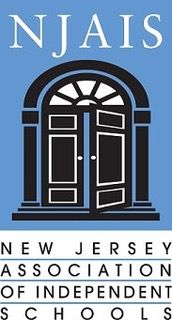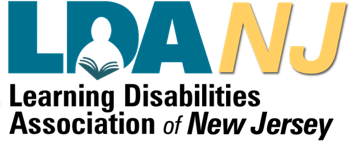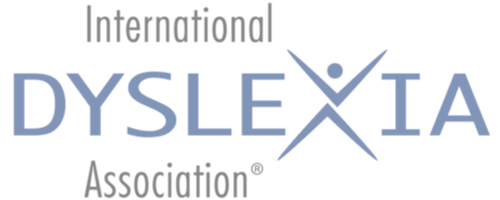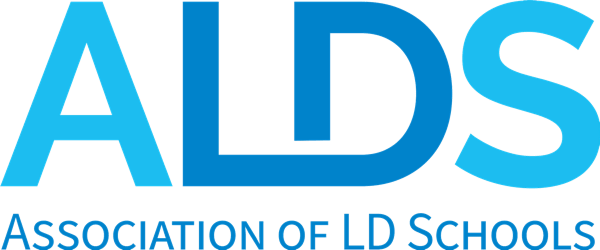Fluency is the gateway to reading comprehension and comprehension is the ultimate goal of reading.
Reading comprehension provides a path for our students to identify simple facts presented in texts, make judgments or evaluate the contents of texts, and finally, connect one text to other texts or situations; simply, it allows our students to make meaning from what they read. Structured literacy programs, like what we provide at The Craig School, address fluency instruction distinctly from the components of structural language that we, as parents and educators, may hear spoken of often, such as phonemes, morphemes, syntax, and semantics. Fluency, however, is much more complex than “automaticity” or decoding a word at a steady rate without any additions, substitutions, or omissions.
Reading fluency, has three major components, and each needs attending to, a) accuracy, b) rate of reading, and c) prosody. When students can decode unfamiliar words accurately, use context to help correct errors in word reading, and have mastered a number of sight words, they are said to be accurate readers. Rate of reading can be defined as one’s ability to recognize words automatically or almost automatically, read at a sufficient rate per minute, and to maintain rate or adjust rate in accordance with increasingly more difficult texts. Finally, prosody, or expression, is how the student attends to punctuation, it is a measure of phrasing, intonation, and timing, and it is the vehicle in which students express and communicate the meaning of the text.
Fluency is measured through informal and formal means, such as curriculum-based measurements (CBM) like the Hasbrouck-Tindal Oral Reading Fluency (ORF), or a norm-referenced assessment, like the Group Reading Assessment and Diagnostic Evaluation (GRADE), both among evaluation tools used at The Craig School. The benefit of an informal assessment is screening and progress monitoring. When used as progress monitoring tools, the extent to which the student is improving from the instruction and intervention is measured. Having a clearer picture of the student’s progress allows our reading and Orton Gillingham teachers to make adjustments to programs and goals or to determine if they should stay the course. It allows us to be responsive to the instructional needs of our students in a thoughtful and timely manner. Norm-referenced assessments, such as the GRADE, include measures of reading comprehension, language comprehension, semantics, decoding, cipher knowledge, and letter knowledge and give us benchmarks from which to build a comprehensive, customized reading program.
Once we have a gauge of where the student is at in terms of reading fluency, the instructional program shifts to the students’ specific needs so that the students begin to read with ease and are able to devote all of their attention to comprehension. For students with dyslexia, a great amount of energy is placed on decoding or word identification. Little is left for understanding what was read. Moreover, a reduced rate of reading increases subsequent challenges with comprehension. However, as Mrs. Cozine wrote in last week’s newsletter, “fluent reading increases comprehension but parents, what you need to realize is, if we push students to read faster than they can comprehend, it is counterproductive.” Reading and Orton Gillingham teachers engage in a delicate dance to balance all five core components of reading—phonemic awareness, phonics, fluency, vocabulary, and comprehension (National Reading Panel) and to do so in a manner that is uniquely suited to the needs of the individual student.
Kindly, I ask you to continue our parent-school partnership by making the space and time for your student to read aloud to you at home. Fluency takes practice and the best practice is through oral reading. You, too, should read aloud to your student as explicit modeling of fluent reading (e.g., “I do, We do, You do” method) is one of the most effective ways of improving reading fluency (Chard, Vaughn, & Tyler, 2002). Don’t forget the power of positive and meaningful feedback as an effective tool as well. Fluency practice applies not only to our students in the lower school but also to our middle and high school students. Teens may improve their fluency through listening to an adult read a text aloud to model fluent reading, by reading along with an audiobook, or by partner-reading when studying for an upcoming test.
By opening the door to fluency, our students explore a new world of understanding and are able to benefit from, and perhaps even learn to enjoy, the process of reading, resulting in higher levels of student engagement and motivation.
October is known world-wide as Dyslexia Awareness month and as such this letter highlights a particular student profile that is near and dear to my heart as I have seen over the last two decades working with students who learn differently, that these students frequently are overlooked in traditional schools when determining appropriate interventions and services. A true testament to The Craig School is our ability to tease out the unique strengths and challenges of our students to individualize a structured literacy program that best suits their needs.
Most of you may know that Attention Deficit Hyperactivity Disorder (ADHD), a developmental impairment of the brain’s self-management system, its executive functions, affects approximately 11% of school-aged children (CDC). This can present as daydreaming, absent-mindedness, fidgeting, restlessness, or a combination of these traits, among others. We also know that about 20% of school-aged children struggle with reading, writing, and spelling significantly enough to meet diagnostic criteria for dyslexia (IDA). What is interesting is to notice where the two meet. For students diagnosed with ADHD as the primary barrier to their educational progress, anywhere between 8% and 39% have a secondary diagnosis of a reading disability. The cognitive profile of students with co-occurring ADHD and dyslexia is unique from students with dyslexia alone as social and emotional skill deficits are present in addition to academic (phonological, orthographical, and comprehension) deficits. Many studies confirm a cognitive relationship between dyslexia and ADHD diagnoses pertaining to executive functions, which include attention, inhibition, planning, organizing, time perception, and working memory. For example, poor reading performance may be attributed to deficits in sustained attention, working memory, planning, organizing, and processing speed. Additionally, there may be a significant difference in the reading speed between those with ADHD and neuro-typical students. This may point to underlying issues concerning working memory and its role in processing speed, reading fluency, and spelling accuracy.
At The Craig School, our teachers use instructional strategies to address working memory deficits, like graphic organizers, metacognitive skill development, and using summary strategies. However, these tools will not address reading fluency. A structured literacy program, found at The Craig School with our extensive use of Orton-Gillingham methodology, coupled with executive function skill development allows us to better meet the needs of our students. Working memory, processing speed, and sustained attention, for example, are woven through our curriculum from second through twelfth grade.
A parent recently remarked speaking of her child who has been diagnosed with both ADHD and dyslexia, “Like many students with learning differences, the public schools have beaten him down and given up on him…and he knew it!” Teachers at The Craig School are immersed in evidence-based instructional practices and programs designed to bring out the best in students who learn differently and are incredibly committed to doing the hard work that is necessary to see each student reach success.
Sitting down to write this blog today, I find myself wanting to express thoughts about my passion for educating students with learning disabilities, the joy of teaching, and being part of those “aha” moments when a student finally breaks through and is able to not only understand a concept but to synthesize understanding and even transfer their knowledge to other meaningful moments of discovery. I yearn for our discourse to reflect the values, purpose, and mission of The Craig School and our conversation filled to the brim with the excitement of a new school year and the rich possibility that accompanies new beginnings.
Nonetheless, at the forefront of my thoughts this week is an article I recently read comparing the national current educational climate as a see-saw of balance between Maslow’s Hierarchy of Needs and Bloom’s Taxonomy, an educational theory on the hierarchy of learning that begins by first remembering, then understanding, followed by applying, analyzing, and evaluating information, finally culminating in the production of new or original work, called the creative stage of learning.
Teachers are busy polishing lesson plans, writing learning targets, and creating engaging and meaningful learning opportunities while also fully cognizant that a student’s basic needs must first be met to allow for learning to happen, to prime the pump, if you will, for the most optimal learning experiences moving a student to the realization of their full potential. On a very basic physiological level, our students need food, water, and shelter. In this basic level Maslow includes safety. According to Maslow, safety is the experience of order, predictability, and a sense of control of one’s own life. It is at this crossroads where I, along with countless educators find myself as we prepare for a new year full of learning and growth. We are balancing the real-life issues of the present unknown with our plans for bringing out the best in all of our students.
Planning for our school opening on September 3rd, we are remembering “Maslow before Bloom.” At The Craig School, this is evident through the preparation of our classrooms and play spaces for healthy and safe learning environments that address not only the present need for sanitization, disinfection, and appropriate health measures for the mitigation of COVID 19, but it is also through the intentional work and focus of our team of Social Clinicians who, partnering with our faculty, foster key tenets of social and emotional health leading to safe spaces for students and safe spaces for learning. These social-emotional aptitudes and skills, such as self-awareness and self-confidence, emotional regulation and stress management, respect for others and empathy, social engagement and relationship building, and finally, ethical responsibility and reflection, create what researcher Amy Edmondson calls “psychological safety” and are necessary to cultivate so that our students’ strengths, capabilities, and intellect can shine. Providing for Maslow before Bloom provides a path to fulfill The Craig School’s mission to address the academic, social, emotional, and moral growth of students with language-based learning disabilities.
The most effective school-home partnerships are bi-directional and use child-focused approaches wherein families and educators cooperate, coordinate, and collaborate to enhance opportunities for success for students across social, emotional, behavioral, and academic domains. What we know from a vast body of research over the past four decades is that home-school partnerships steeped in open and honest communication, along with responsibility-taking for working together as a team and shared common goals, resulting in mutual child-centered decision-making focused on positive student outcomes. It is within this relationship of families and professionals that every child’s education takes place. As parents and schools learn the value of collaboration, communication, and creating meaningful partnerships, together we create an educational environment that supports the abilities of all children to succeed.
The following provides a guide to navigate through the Parent-Teacher Conference process:
A Parent’s Guide to Successful Parent-Teacher Conferences
Before the Conference
During the Conference
After the Conference
A Teacher’s Guide to Successful Parent-Teacher Conferences
Before the Conference
During the Conference
After the Conference
This week, I have had a few conversations with parents regarding play in a socially-distanced world. Whether your child is learning remotely or attending school in-person, in second grade, or 12th grade, we acknowledge that times for unstructured movement and peer interactions, commonly called recess or break in a traditional school setting, are essential parts of the school day. This notion is also detailed in the United Nations Convention on the Rights of the Child which states, young people have the "right to rest and leisure, to engage in play and recreational activities appropriate to the age of the child." Not only is there a body of evidence indicating cognitive performance and attention increases with play, learning components such as memory and retrieval, attention, dexterity, reading, verbal fluency, semantic fluency, and enhanced student motivation and morale are potential outcomes from incorporating play in a school day. Furthermore, studies show the power of play as a tool in the development of important prosocial behaviors; behaviors such as sharing, helping, cooperating, and comforting others. In younger students, recess develops socialization skills that lead to friendships, and for our older students, these socialization skills continue and become more peer-based as adolescents forge a sense of belonging and identity. Throughout the school years, these unstructured times for socialization are one strategy to help students cope with emotions during stressful times; in our current climate, play remains essential to healthy child and adolescent development.
If you have emailed me, you may have noticed my email signature line quote that reads, “When a flower doesn’t bloom, you fix the environment in which it grows, not the flower” (Alexander den Heijer). This one phrase perfectly sums up my educational philosophy. As an educator, I believe that children are beautiful, whole, and perfect beings. They are messy, they are works in progress, and they represent the wonder of possibility. I believe that it is not the child that needs to be somehow “fixed,” rather, that when our children are given the right opportunities, support, kindness, and genuine care, they begin to blossom, they begin to move more fully into their potential.
As an educator, I find myself immersed in the “how” and the “what” of the education of young minds. For example, how do we increase academic engagement for students with learning disabilities, and what instructional practices will best suit the students’ unique learning needs? Sometimes the “why” is more nebulous. Why do we do what we do? I believe that in order to truly be successful, we must more fully understand our “why.” This is true for me as an educator and is just as important for The Craig School community to understand.
A school’s mission statement and core values drive the “why” of the community. These form the basis for our decisions. I would argue that the most successful schools are, at their core, mission-driven, and purpose-focused. Just like the beacon atop a lighthouse illuminates a path in the midst of the unknown, our mission and values guide decisions both great and small. As I begin a new chapter as the Head of School at The Craig School it is of utmost importance that together, we are reminded of our shared “why.”
At The Craig School we acknowledge learning differences, we understand them, and we provide the instructional strategies and supports that allow the student to grow and learn. We believe in a firm foundation of academic knowledge and higher-order thinking skills; we believe in whole child development and that social, emotional, and moral growth are integral to a student’s education; we believe that with the right environment and opportunities that all students can and will thrive. Our mission is focused on a strategy-based, comprehensive, and challenging education that is designed for the unique academic needs of students with learning disabilities while also celebrating and bringing out each students’ aptitudes and strengths. To this end, fostering a child’s self-esteem and self-awareness is paramount.
I encourage you to take a moment to read through the Statement of Core Values of The Craig School and the Mission Statement of The Craig School. These are our collective “whys.” May they provide for you a light and a path forward as we work hand in hand to nurture the true potential and abilities of all of our students.
“Speaking is natural, and reading is not. Reading is an acquired act, an invention of man…” (Shaywitz, 2003).
As most of you will attest, reading does not come naturally, easily, or incidentally for countless children. It is a tough hill to climb that takes patience, time, and tenacity. Through decades of research, we understand that dyslexia can vary widely in students from a phonological deficit, orthographic deficit, a naming-speed deficit, or a combination of one or more of these challenges. Additionally, adding on processing speed, working memory, rapid automatic naming, and visual-verbal paired-associate learning challenges, the complexity increases exponentially and the need to use a proven, evidence-based approach is more critical than ever before.
The extraordinary level of expertise among our faculty in the Orton Gillingham program has benefited countless students over four decades. Known as the “Gold Standard” in literacy instruction for language-based learning differences, in particular dyslexia, this signature program at The Craig School is multi-sensory, language-based, sequential, cumulative, and flexible. It is not a scripted program, rather it is diagnostic and prescriptive in nature allowing our teachers the ability to customize and individualize each student’s Orton Gillingham program. Orton-Gillingham is not whole-word reading. Whole-word, a typical literacy practice found in many schools, in its simplest form is the act of teaching students to read by sight, memorization, and context. Unfortunately, these instructional practices remain in schools around the country, even though the science of reading clearly refutes their efficacy. What is clear is that structured literacy, of which Orton Gillingham is a prime example, is paramount for students with dyslexia.
Orton-Gillingham instruction directly takes on core weaknesses in phonological skills, decoding, and spelling, through explicit, systematic, and sequential instruction on phonemes, letter-sound relationships, syllable patterns, morphemes, vocabulary, sentence structure, paragraph structure, and text structure. Additionally, this approach has been described as direct instruction with a high level of student-teacher interaction, carefully selected, decodable words and nonsense words, text at the instructional level, rather than the frustrational level, and prompt, corrective feedback. In a typical school literacy program, many teachers will not have the background knowledge nor training, let alone the time, they need to implement with fidelity a research-based, valid, and reliable reading program. The teachers at The Craig School do not fall into that category. Rather, they are highly skilled and trained in the science of reading and understand a vast array of instructional strategies, approaches, and practices that align to the best of available research on teaching students with dyslexia how to read, write, and spell.
This week we join our fellow New Jersey schools for the Week of Respect, a week dedicated to bringing awareness to the importance of cultivating a healthy, supportive, safe, and positive school climate through character development and social-emotional learning, all with the goal of sustaining a school void of harassment, intimidation, and bullying. At The Craig School, this work is done by creating a physically, emotionally, and socially safe learning environment that values each person as a contributor, is respectful of our community members, promotes collaboration and communication among families, students, and school staff, and most importantly is modeled by our adult community for students. Students with language-based learning disabilities may struggle with receptive language, which is the ability to understand and comprehend spoken language, as well as expressive language, one’s ability to use words to express themselves. These variables alone may impact a student’s risk of victimization. Additionally, students with learning disabilities who also have secondary or comorbid conditions, such as ADHD, may experience increased social skill challenges, creating a need for focused and intentional social-emotional learning opportunities. We recognize that a school’s work to this end is one of progress, rather than a finished, perfect endeavor. At The Craig School, we are committed to continuing this work.
“We help our parents assess their child’s true potential and understand the nature of learning disabilities, and provide our families an internal support network within the Craig community.”
The culminating line of The Craig School mission statement has been on my mind lately. How do we build community and authentic parent-school partnerships in a world that looks, feels, and in many ways is, so different than what we have previously known? Not only is it our mission at The Craig School to champion awareness, acceptance, and understanding of learning differences but it is also our mission to promote a support system among our parents, to provide opportunities to share our stories as parents of students with learning disabilities, and to partner with you as we provide an educational environment primed for student growth and achievement. According to Abright and Weissberg (2010), parent-school partnerships are child-focused approaches wherein families and educators cooperate, coordinate and collaborate to enhance opportunities for success for students across social, emotional, behavioral, and academic domains. There are structural elements that provide a means to this end, such as parent-teacher conferences, becoming a member of our Parents’ Association (PACS), or volunteering at your child’s school, all part of The Craig School experience. However, it is argued that these parent-school partnerships must go a step further and become bi-directional. That is from parent to school and from school to parent. Through bi-directional parent-school relationships, such as two-way information sharing and joint decision making and collaboration, pathways are formed for improved student outcomes. As you get to know the teachers at The Craig School, you will find individuals that are communicative and ready to partner with you. This is also true of the administration and staff at The Craig School.
As you get to know my work as an educator, you will find that my approach is rooted in strengths-based learning and assessment wrapped in whole child development. What I have experienced both through academic research and practical boots on the groundwork in the field of learning disabilities is that even though our main objective is to teach our students to read, to write, and to more fully express their intelligence, there are opportunities for tuning into values and characteristics that will serve our students well both now and in the future. As our September 3rd school opening gets closer, conversations with teachers and parents alike have reminded me of the importance of nurturing resilience in ourselves and in our students. If ever we needed to bolster our collective resilience, now is the time.
The resilience movement in education began as a way to better understand why children reach different levels of success when faced with the same challenges and environments as other children. Resilience is a quality our students already possess. Our job is to nurture it. When we help our students recognize and build upon their strengths, abilities, and competencies, their confidence grows stronger and their resilience is fortified. As you have conversations with your children about school reopening, one way that you can draw out or strengthen resilience in your child is to take new and unfamiliar processes and procedures and make them known. This can be done through (a) modeling, learning by imitation, (b) role play, learning what to do and how to do it, (c) constructive feedback or positive reinforcement, and (d) generalization, that is, taking these skills from practice into real-life settings. Resilience is strengthened when children develop positive coping strategies to overcome stressors and challenges. We will be working on resilience in our community so we can all develop positive coping strategies to overcome stressors and challenges together.
For more information on ways of giving or to make a donation online you can clicking here.





